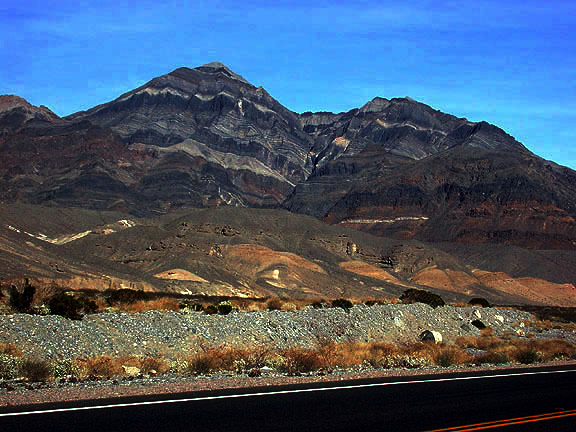
| Here, the view is looking northward from State Route 190, several miles east of Furnace Creek Inn, to paleontologically significant Pyramid Peak, which is the taller of the two peaks along the skyline. The dark and light-gray banded strata which comprises most of the peak is the Upper Cambrian Bonanza King Dolomite, which produces locally abundant fossil algal nodules called oncolites. Below the Bonanza King is the brownish, more slope-forming shales and limetones of the Lower to Middle Cambrian Carrara Formation, which yields many species of trilobites, plus innumerable invertebrate tracks and trails; the noted trilobite-producing Lower to Middle Cambrian Pyramid Member of the Carrara Formation was named for its distinctive occurrence here at Pyramid Peak, a rather famous fossil locality that prior to December 1994, when the Desert Protection Act became law of the land (and created Death Valley National Park all in one fell swoop, to boot) used to lie just outside the boundaries of then Death Valley National Monument. Lots of paleontology enthusiasts remember the days when trilobites could be legally collected from those Carrara Formation exposures at Pyramid Peak. |